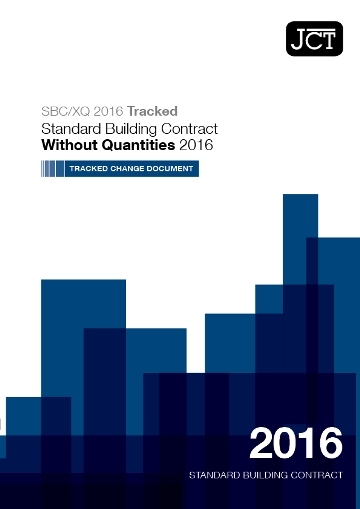2020. 3. 1. 11:04ㆍ카테고리 없음
The JCT launched its of the on 15 June 2016. This will be followed by the other JCT contract suites, which will be rolled out family by family. We understand that the next contracts to be published will be the short form of sub-contract and sub-subcontract (date to be confirmed), followed by the (JCT DB) family in the autumn this year.This post looks at some of the key changes in the minor works suite:.
Jct Minor Works Building Contract 2011 Sample
(MW 2016). (MWD 2016). (MWSub/D 2016).Many of these changes were, but others may take practitioners by surprise. The JCT has also taken the opportunity to tighten up some of the drafting, clarify certain provisions and update the guidance notes within the contracts.Payment provisionsThe JCT indicated that the payment provisions would be amended but the extent of the changes may come as a surprise to some. While there are a large number of changes to clause 4 of MW and MWD 2016, these reflect a change in approach rather than any real change in substance:. Interim Valuation Dates (clause 4.3).
Interim valuation dates (IVD) in respect of each interim payment are now defined. While the parties may agree their own IVDs, the default position is that the first IVD is one month after the commencement date of the works and then at monthly intervals. The intention behind establishing IVDs is that they will operate down the supply chain and promote fair payment. MWSub/D 2016 provides that its IVD should be the same as the first IVD under the main contract and the intervals that apply under the main contract should also apply under the sub-contract. Dates for payment (clause 4.3). The due date for payment is now defined by reference to the IVD, rather than as 4-weekly intervals from the commencement date as under MW 2011. This provides more certainty as to when the due date is.

Minor Works Control System
In MW/MWD 2016 it is the date seven days after the relevant IVD in relation to each interim payment. In MWSub/D 2016, it is 12 days after the relevant IVD. The final date for payment of each interim payment in all the contracts is now 14 days from the respective due date. Simplified payment process (clause 4.3). MW/MWD 2016 provide for the monthly payment cycle to continue after practical completion up to the due date of the final payment. Under MW/MWD 2011, interim payments made before practical completion operated on a monthly payment cycle, whereas those made on or after practical completion operated on a two-monthly cycle.
Contractor’s application for payment (clause 4.4). MW/MWD 2016 expressly allow the contractor to make an application for payment.
This reflects what often happens in practice whereas the 2011 contracts assumed that the architect/contract administrator would simply issue an interim certificate with five days of the relevant due date. It was only if this certificate was not issued that the contractor would issue a payment notice. Payment and payment notices (clauses 4.5 and 4.6). The provisions dealing with payment and pay less notices for both interim and final payments have been consolidated and are now dealt with by clause 4.5. The provisions setting out the consequences of failing to pay any amount due, whether an interim or final payment, have also been consolidated (clause 4.6).Parties entering into a 2016 minor works contract should ensure that they understand the amended payment process set out in clause 4. It is compliant with the payment provisions of the and parties should not rush to amend it.Recent case law demonstrates that problems often arise when parties amend the payment provisions in standard form contracts, in particular when the court interprets them in a way that neither party intended.


For example, in, the parties amended their contract ( ) to agree a specific schedule of interim applications and payments. Hi StuartWhile we can’t give advice on any specific contract on this blog, we understand that the JCT’s intention with this drafting was to provide a flexible approach. Looking further afield to engineering, infrastructure or publicly-funded projects, that would mean details of the type of coverage required would be added, rather than detail of a particular policy. That is, who is responsible for insuring what risks and on what basis. In those wider fields, that would form part of an insurance schedule, based on the advice of specialist brokers.Back to the current JCT forms and we’re sure that “good practice” will emerge, but until the JCT publishes the Standard Building Contract and Design and Build Contract, we await the JCT’s own guidance.
In the meantime, on a simple project, if the advice you receive from insurers or brokers is that a particular policy can meaningfully be referred to, that may be their position. In that scenario I wonder what the parties would have to do if the policy wording or insurers was likely to change during the course of the works?